Concrete is arguably the most used construction material on earth. We use it to build almost everything like roads, bridges, dams, tunnels, shelters, sidewalks, walkways and even the house you live in. The applications are almost endless.
It’s pretty common to find professional craftsmen use it for construction on a daily basis. Although it may look simple and easy especially when you watch a pro concreter carry out projects with it, it’s not really as easy as it seems. It takes a lot of skills and requires the right concrete working tools to get the best results.
Concrete is very unforgiving. That means, once it’s mixed up and poured, it will harden whether you finish it properly or not. That’s why you need the right tools at your disposal when pouring it.
Once it’s poured, it needs to be placed properly, screeded, floated and finished properly. It also needs to be grooved in case of cracks, edged and sometimes broomed.
All these processes require the use of different types of tools. Here in this article, I’ve listed the most essential ones and what they’re used for.
So, if you’re new to this and you want to know what you need to pour your own concrete slabs, walkway, driveway or carry out any other projects that require its use, here’s what you need.
Table of Contents
1. Concrete Placer
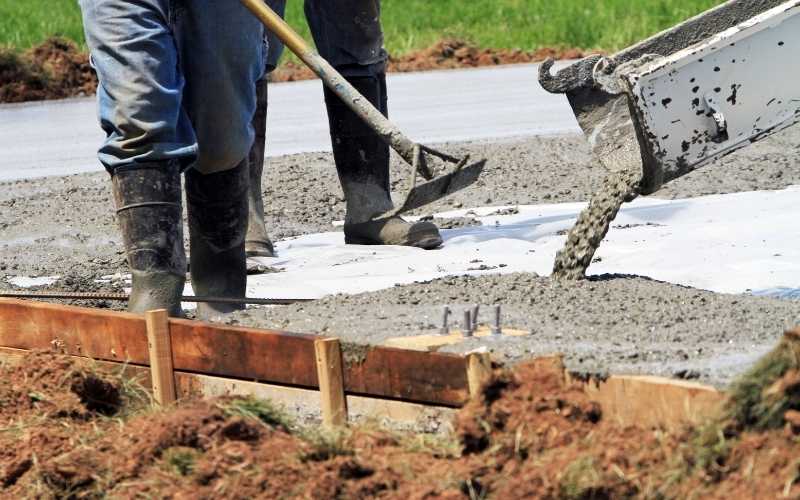
There’re many tools for spreading wet concrete, and one of the most common ones you’ll find is a placer.
It has a long handle like a rake, but instead of the prongs of a rake, it features a curved rectangular piece of metal head for pulling and spreading the wet cement mixture around.
This is not for finishing, but just for spreading the concrete mixture around.
2. Concrete Vibrator
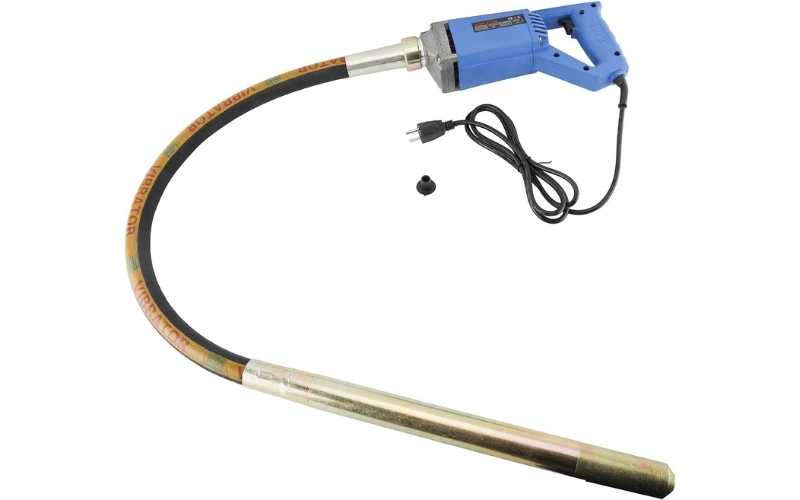
Vibrating concrete after pouring it ensures there are no air pockets left inside the form you made. Finishing it without vibrating it especially close to the forms you made might end up badly later if there are spaces and air bubbles underneath.
Vibrating it helps it compact properly, removing any air pockets and bubbles that might have not been covered.
3. Knee Board Slider
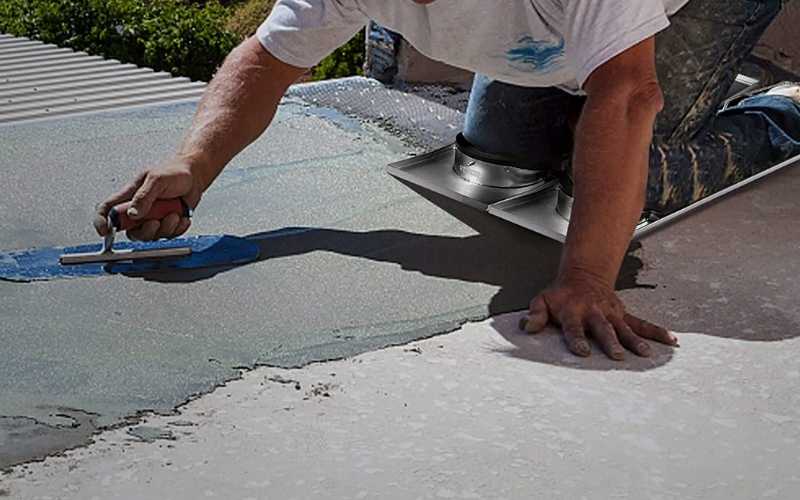
Sometimes when finishing wet concrete, the best position is on your knees. This might not be the most comfortable work posture, but with a knee board slider, it’s easier to make it work.
These can easily be strapped to your legs so your knees don’t dig into the concrete as you slide across the surface. It also aids movement across the surface because you don’t have to stand up every time you need to move. You can just slide across.
They also protect your knees and chin area from getting wet and stained with it, thus protecting not only the surface you’re working on, but you as well. Ultimately keeping your legs clean as you work your way over the surface.
It has many applications, whether you’re finishing wet concrete, you’re laying tiles or carrying out any other flooring project.
4. Screeding Tool
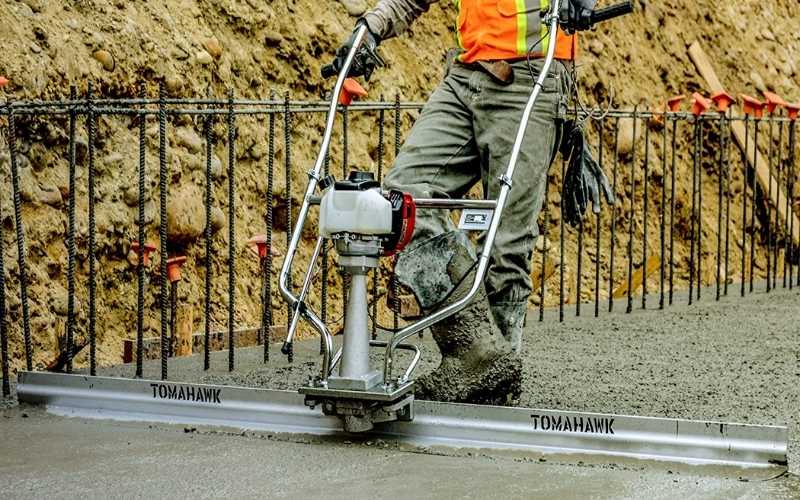
Once the concrete has been poured and placed, it has to be screeded using a screeding tool. Screeding involves leveling or flattening the poured mixture so that the surface is smooth and flat before finishing is done.
There are different types of screeding tools. It can be done both manually and with a power screeding tool. The basic screed tool is usually in the form of a long length of 2×4 with very straight edges, or a straight aluminum bar in the same shape as a 2×4 manufactured for same purpose.

The best ones are usually the ones built with aluminum, because they’re lighter, easier to carry around and usually produce better results due to the straight aluminum edge.
If the project you’re handling is not that big, a manual screed is ideal for the job. On the other hand, if you’re pouring a really large floor, you might want to opt for the power screed.
These usually come with the long aluminum bar attached to a motor which not only flattens the concrete, but also vibrates it as well, ensuring the stones sink down, filling any spaces below and leaving the cream at the top.
5. Bull Float

Once the concrete has been poured, spread properly and screeded, the next step is to float the surface. Screeding levels the surface, but it also leaves several imperfections on the surface such as ridges and voids.
These gets rectified through floating. Floating also helps push the stones or coarse aggregate further below, bringing the cream to the top to make finishing it easier.
There are different types of floats you can use for finishing. The two main types you’ll commonly encounter is the Mag float and the bull float.
The mag float is a small magnesium float usually 16 inches long by 3 inches wide. It’s typically used for finishing concrete slabs and flooring that are too small for a bull floats. It’s ideal for leveling and smoothing out the creamy top that has been left by the screeding process.
Bull floats on the other hand are really wide floats with long handles that are used for leveling and finishing large slabs and floors. As a concrete pouring and finishing company, this is one tool you must have in your arsenal.
Because of the long handle, the bull float allows you to finish and completely level the creamy surface without walking on top of it. It also pushes the aggregates further down, making the top more creamy and easier to finish.
6. Self-Leveling Horizontal Laser
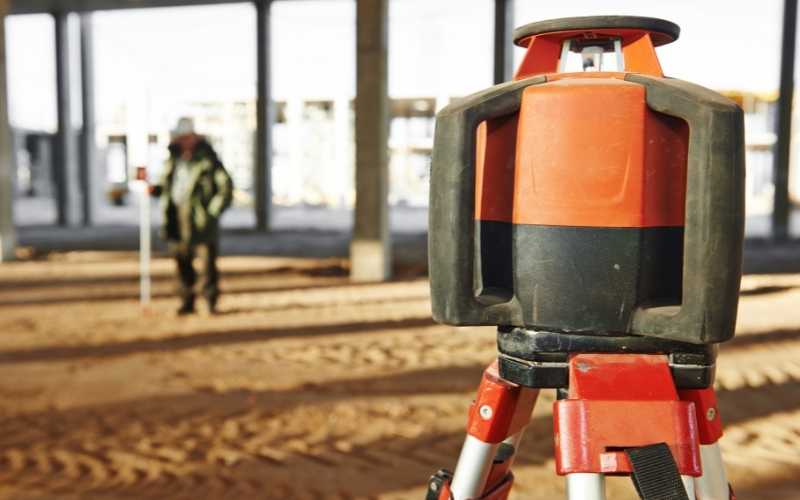
Before pouring your concrete, one of the first things to do as a professional is to ensure the poor is flat and level. To do that, you need to grade the surface you want to pour it on using a self-laveling horizontal laser.
Grading with a self-leveling laser can also help you build the form in a way so that you channel the flow of water towards the appropriate drainage, preventing water from accumulating in a certain area on the floor.
7. Soft Broom

After finishing is done, the final step is to broom it. Sometimes, brooming is not necessary especially if you want the finished surface to be shiny.
Brooming however adds some texture to it, making it safer to walk on especially if it’s a surface that will be frequently exposed to water like your sidewalk and walkways.
Leaving the surface smooth and shiny can cause it to be slippery if there’s water on it. So brooming it adds texture and friction to it so walking on it is safe.
8. Groover
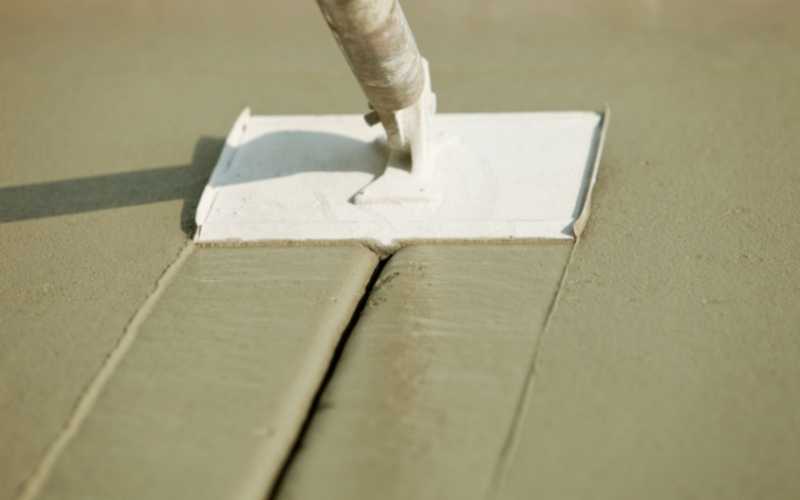
The purpose of grooving poured concrete is to cut joints into it. These joints are cut because of possible cracks. If the hardened mixture cracks, it will likely crack along the joint, instead of cracking in an unusual position.
Adding joints or grooving also adds some aesthetics to the finished product, making it look nicer. If you want to add a joint, you need a groover tool like the one shown above.
9. Edger
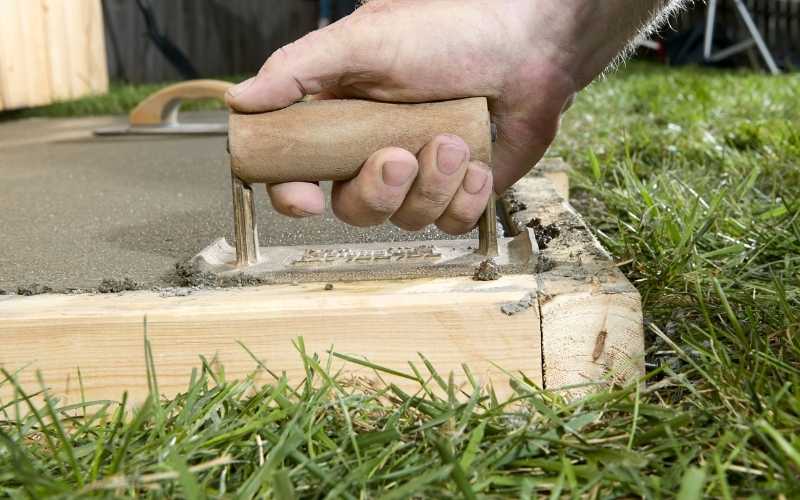
Edging is one of the final processes of finishing poured concrete. Edges are usually done to add like a picture frame effect to the finished surface, after it has been floated and broomed.
There are different types and sizes of edger you can choose from. The bigger the size, the more difficult it is to handle especially for a beginner.
There’re edgers with flat ends, while there’re edgers with curved ends. I usually prefer the ones with curved ends because it’s easier to move them to and fro along the form. The ones with flat ends require more skill to use because they can easily dig into the finished form if it’s not handled properly.
10. Finishing / Power Trowel
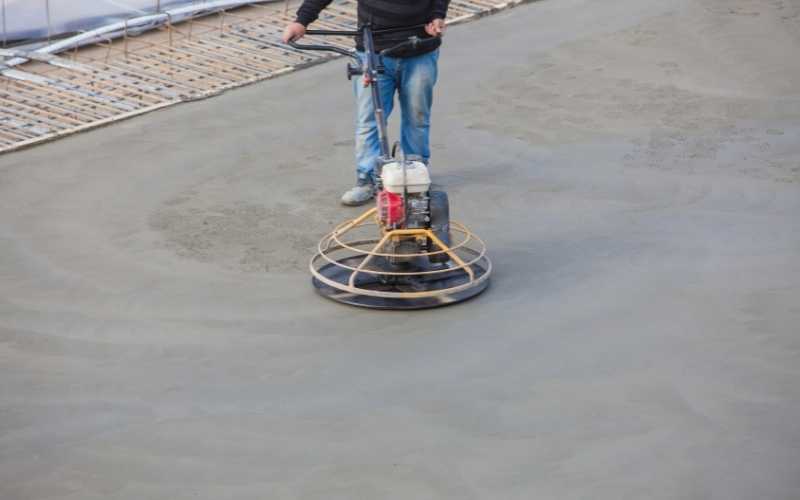
Of all the concrete working tools listed in this article, the trowel is one of the most common you’ll come across.
Trowels are used for a whole range of activities that involve moving, digging, applying or evening smoothing small amounts of viscous materials or mixtures.
There’re garden trowels for digging and moving soil, while there are concrete or mansory trowels for moving, placing, leveling and smoothing cement mixtures and aggregates. In fact, there’re even trowels for painting.
The most common trowel used for concrete is the float or finishing trowel used for leveling, smoothing and adding texture to the top layer of hardening concrete mixture.
If you’re finishing a small floor or finishing corners of a larger floor, then you’d need a hand trowel which has one end rectangular and the other pointed.
Apart from hand trowels, there’re also power trowels for floating, smoothing and finishing large floors. Power trowels are used most of the time because they cover large areas easily and makes the job faster as well.
Related: The 10 Best Edgers For Lawn And Landscape Edging
11. Heavy Duty Flat Chisel

A chisel is one of the most common tools used by craftsmen of all trades. Whether you’re a woodworker, a metal fabricator or a concreter, it’s very likely that you’re going to need a chisel on the job.
Sometimes, you just need to break off some concrete and using a chisel might just be the best tool for the job. It can be used to carve, break, crack and even bore holes in hardened concrete.
A typical concrete chisel is about 1 inch thick, 12 inches long and made of high-quality steel for strength. It usually features a shock absorbing handle and guard to protect the user’s hand from vibration and direct strikes, in case the hammer misses the chisel head.
12. Concrete Cutter / Saw

Whether you’re building a wall around a property, building a house or you’re constructing a walkway with pavers, having a concrete cutter also known as a disc cutter will save you a lot of time and efforts. Buy a good one and you can cut different types of materials with it like bricks, pavers, reinforced concrete blocks and even metal rebars with it.

